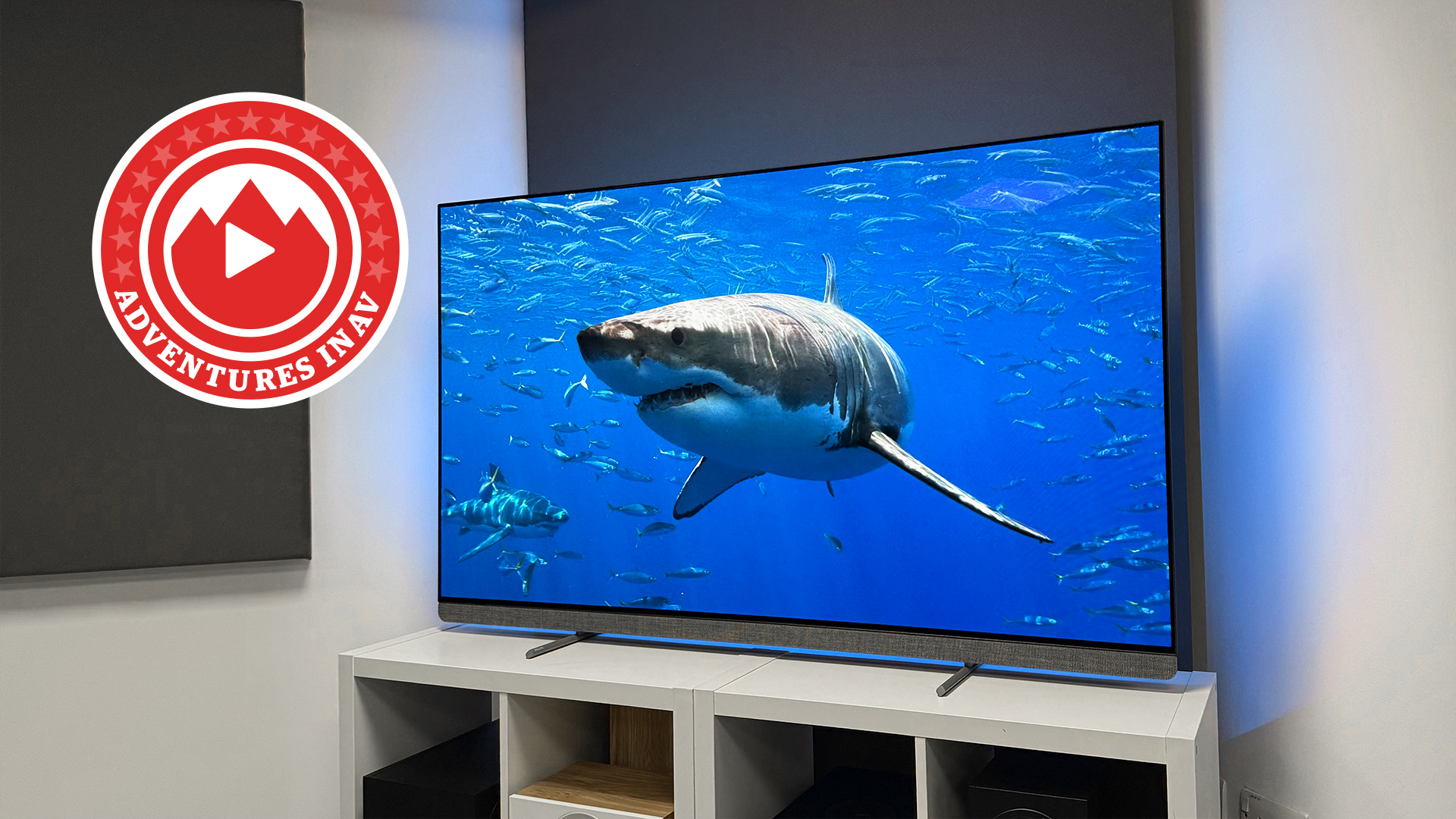Which JBL speaker should you buy in 2025? Charge 6, Flip 7 and more compared
There are plenty of five-star options to choose from, so we are here to help you find the JBL Bluetooth speaker that is best-suited to your needs
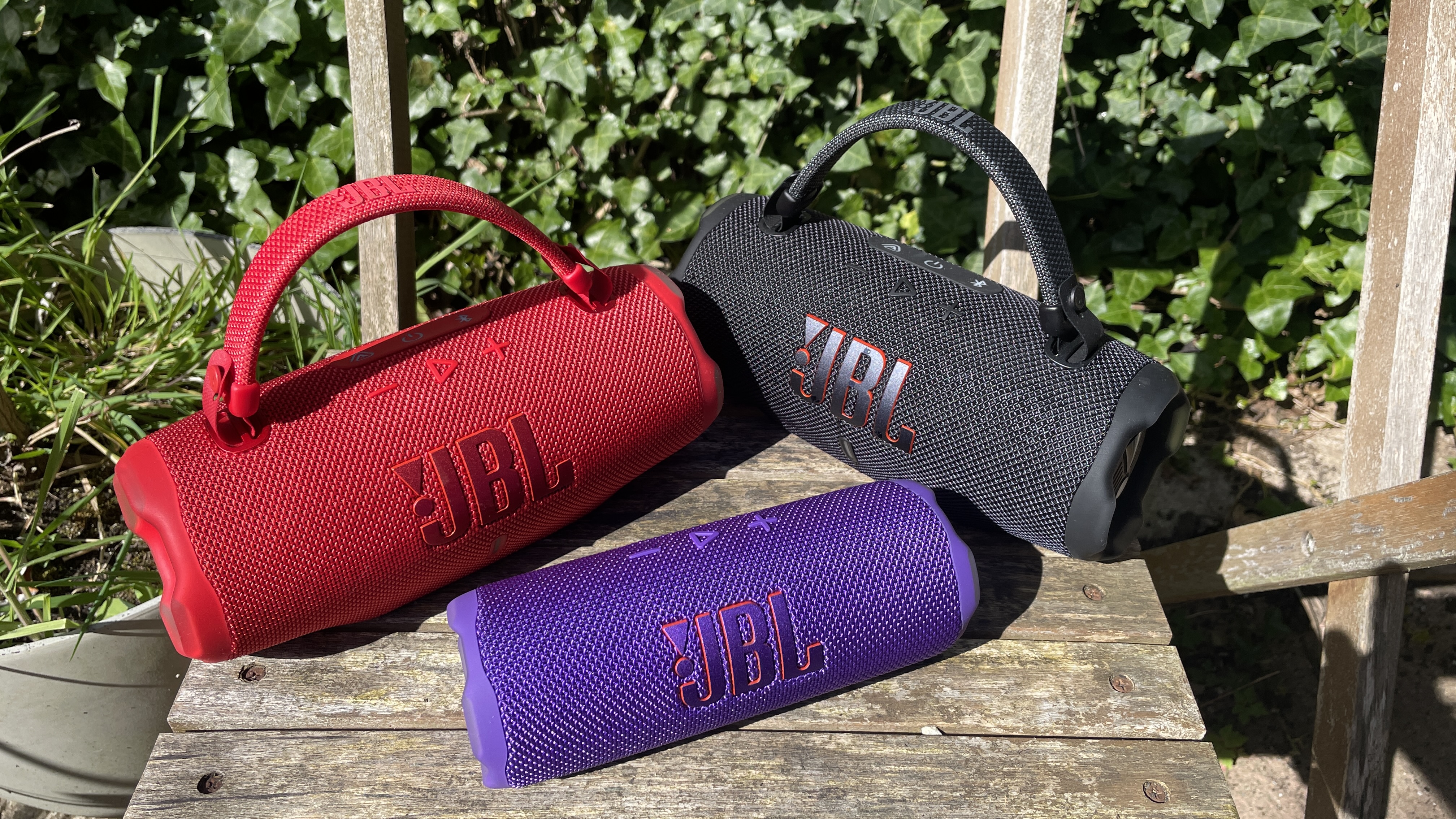
JBL is a name that pops up in many areas of the hi-fi world, but when it comes to portable Bluetooth speakers, the American brand is definitely one of the big dogs.
We have been handing out five-star reviews and What Hi-Fi? Awards to JBL for its portable speakers for years now, thanks largely to their excellent combination of rugged build quality, handy features, and terrific sound quality for the money.
If you’re in the market for a portable Bluetooth speaker, then it’s likely that JBL has come up as part of your research; but which one should you actually part with your hard-earned cash for?
Whether you want something small to chuck in a beach bag, a larger boombox that’s capable of getting a party started, or something in between, JBL has a portable Bluetooth speaker for you. Read on and we’ll help you find it.
JBL Charge 6
Should you buy the JBL Charge 6?
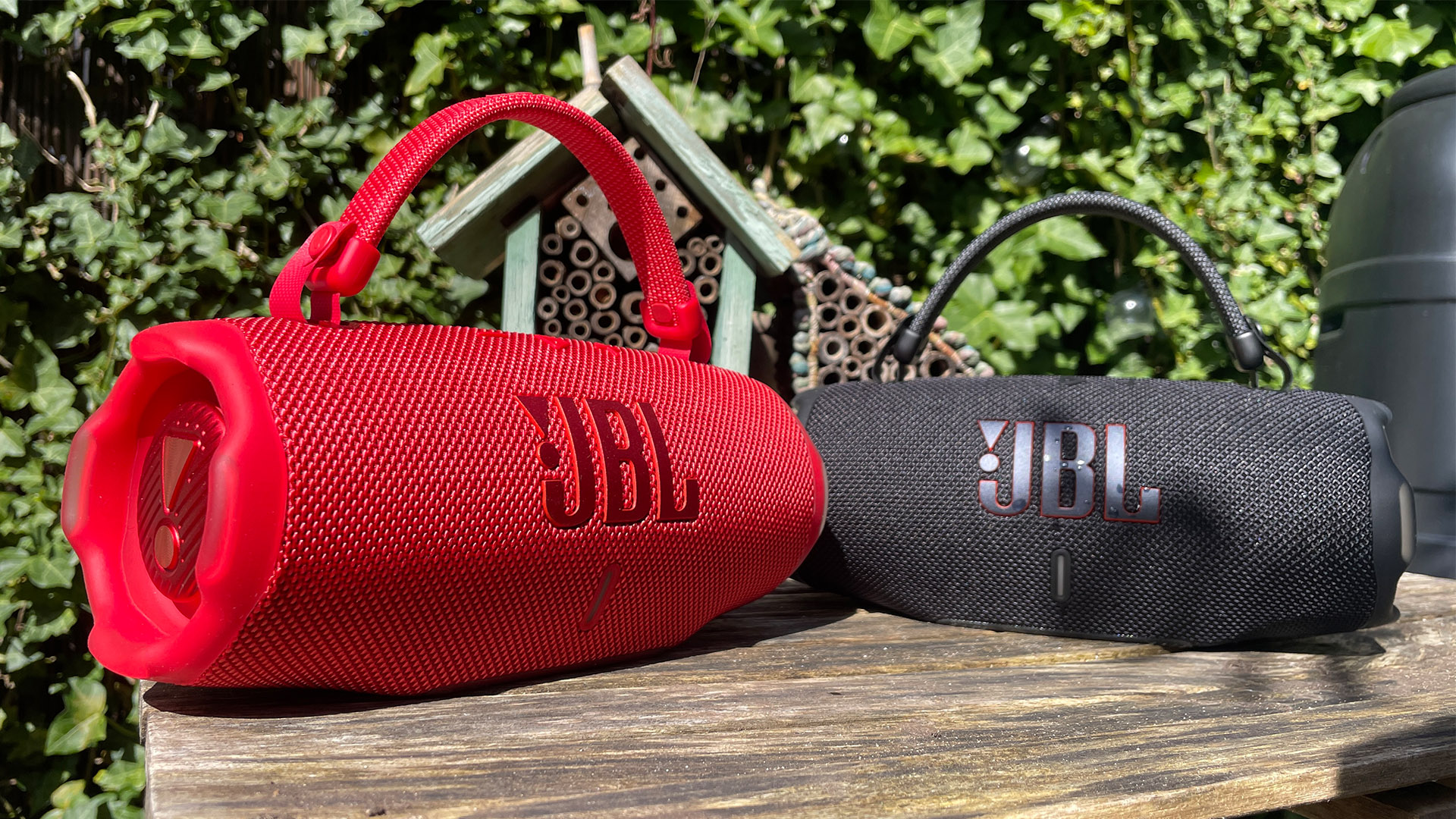

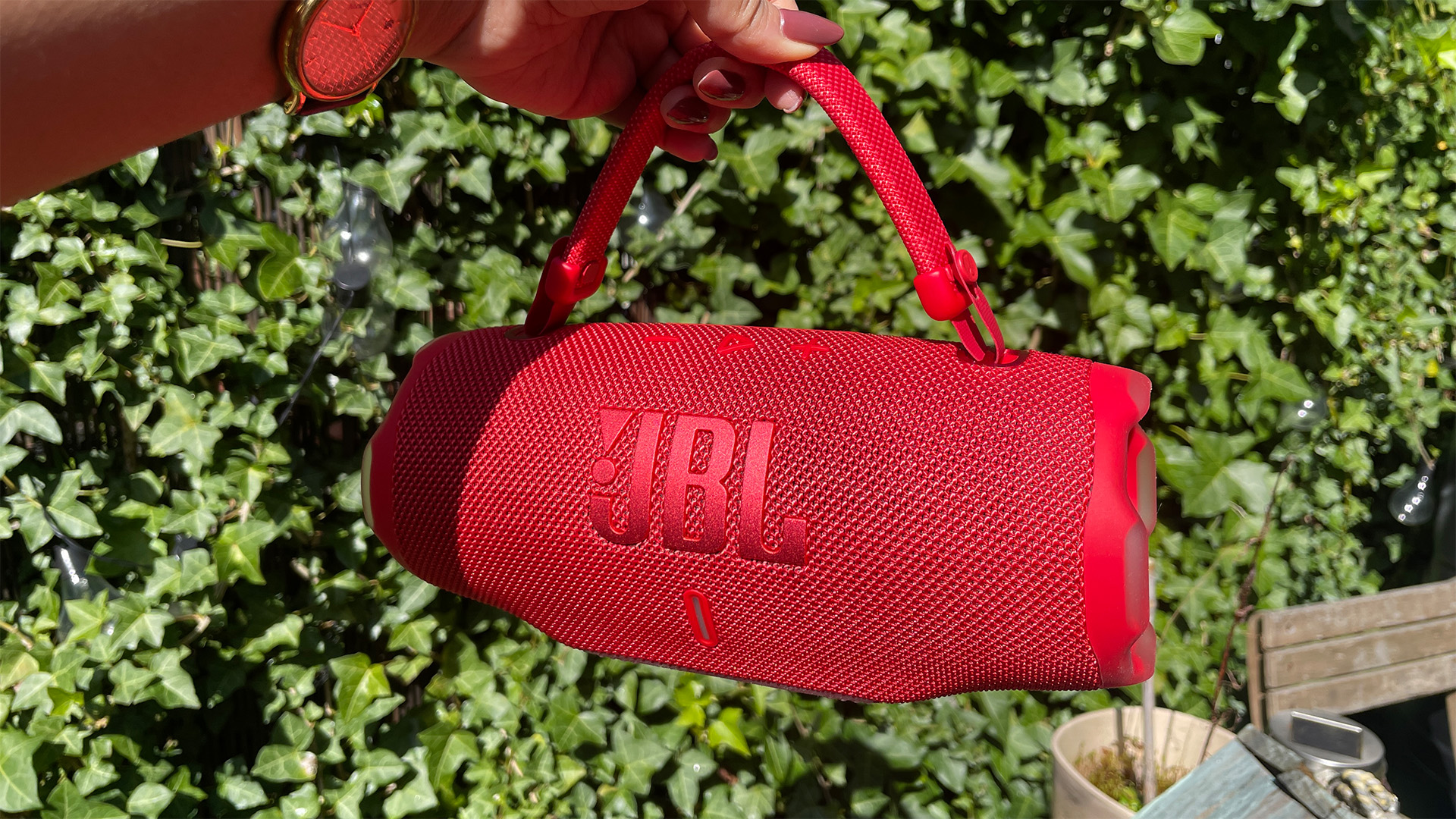

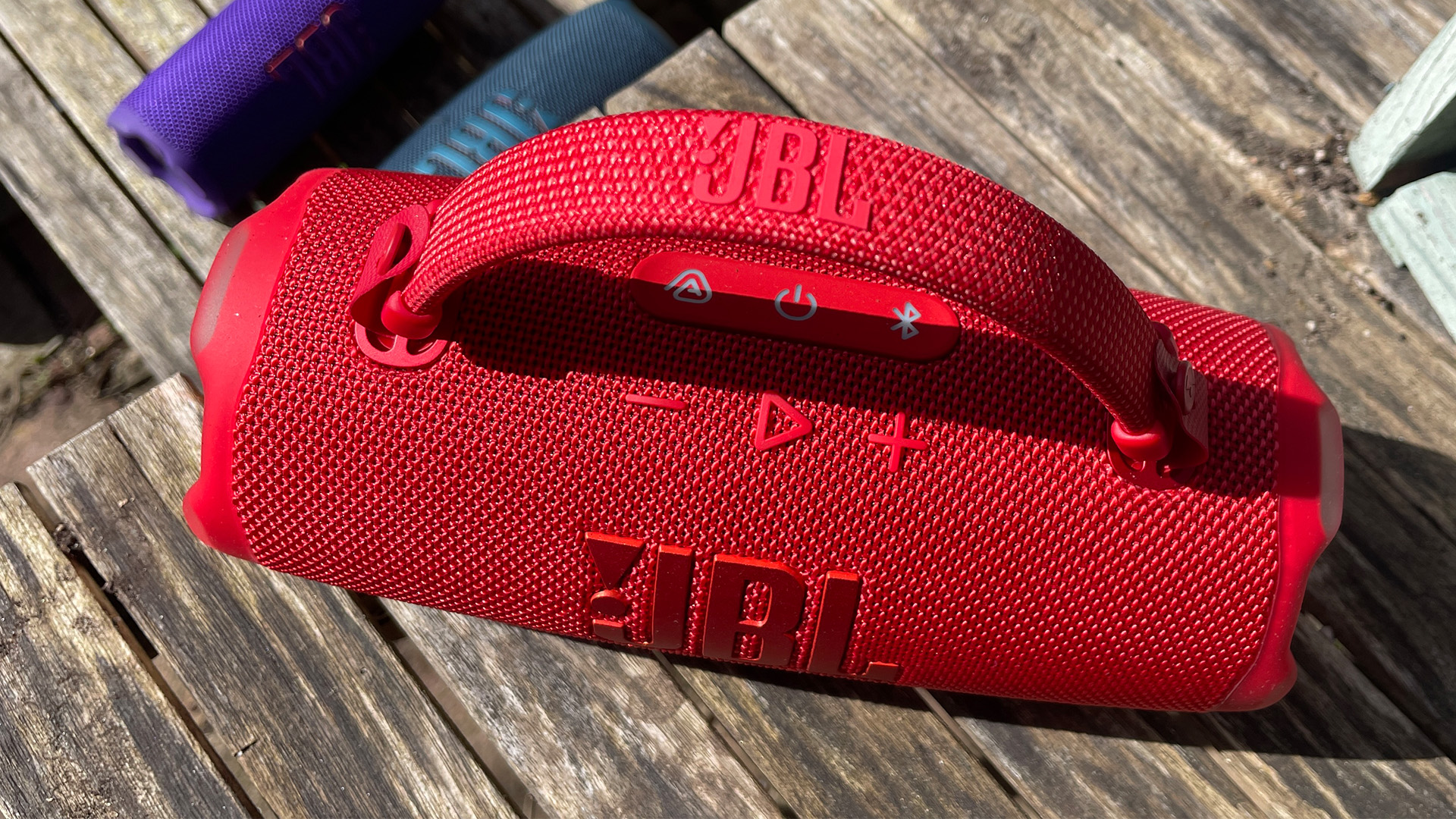
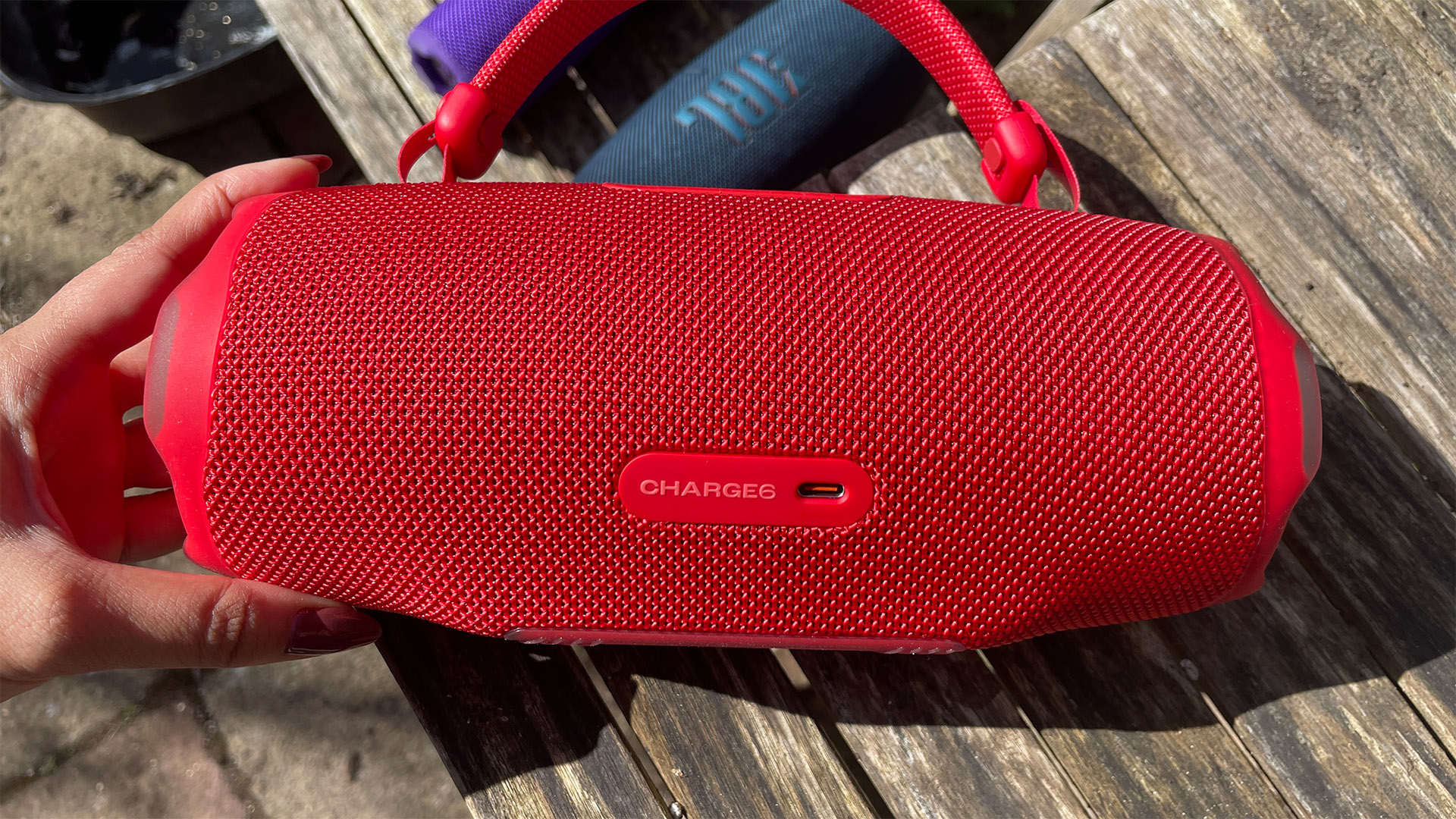
The Charge 6 is one of the most recent additions to JBL’s extensive range of portable Bluetooth speakers and it’s a wonderful all-rounder that strikes a lovely balance between performance and price.
The Charge 6 will set you back £10/$20 more than its predecessor (it costs the same in Australia), but it improves on the Charge 5 in a number of small but meaningful ways.
Weighing in at just under 1kg and taking up about the same amount of space as a bottle of wine, the Charge 6 is well suited to life on the go, particularly with its sturdy build, IP68 durability rating and detachable handle.
The latest hi-fi, home cinema and tech news, reviews, buying advice and deals, direct to your inbox.
Lengthy battery life of up to 28 hours also makes it a suitable travel partner, and you can even use its USB-A port to charge your phone. It also has Auracast sharing tech on board, so you can pair it with other similarly equipped speakers when one isn’t enough.
Inside there’s a 20mm tweeter and a newly developed woofer that share 40W of power; but JBL has also added ‘AI Sound Boost’, which is designed to analyse the songs you play in real time and help to cut out any distortion. Connect a suitable source using a USB-C cable and it can even play hi-res tracks at up to 24-bit/96kHz.
The result is a powerful, punchy sound that is clearer and more detailed than the Charge 5 could manage. Considering that speaker won multiple What Hi-Fi? Awards, the JBL Charge 6 is a very worthy successor.
Should you buy the JBL Charge 6?
The JBL Charge 6 is easy to recommend to anyone. It’s a brilliant combination of portability and performance, with a price tag that’s not prohibitive.
Perhaps the only thing that could potentially tempt you away from the Charge 6 is its own predecessor. The Charge 5 is still available at a hefty discount (we have seen it for under £100 / $130 / AU$200, depending on which colour you choose) which is quite the bargain. That’s worth considering while stocks last, but do bear in mind that the Charge 6 is still the superior speaker.
Is it the best portable Bluetooth speaker at its price?
In a word: yes. In fact, we recently made the JBL Charge 6 the top choice on our list of the best Bluetooth speakers.
Its closest rival is the Bang & Olufsen Beosound A1, which we tested at £199 / $250 / AU$330 but is now available for slightly less, albeit still more than the Charge 6. The B&O has also been around for a number of years now, so while it still very much looks the part, its feature set is perhaps starting to look a little stale.
- Read our full JBL Charge 6 review
- Full comparison: JBL Charge 6 vs JBL Charge 5
JBL Flip 7
Should you buy the JBL Flip 7

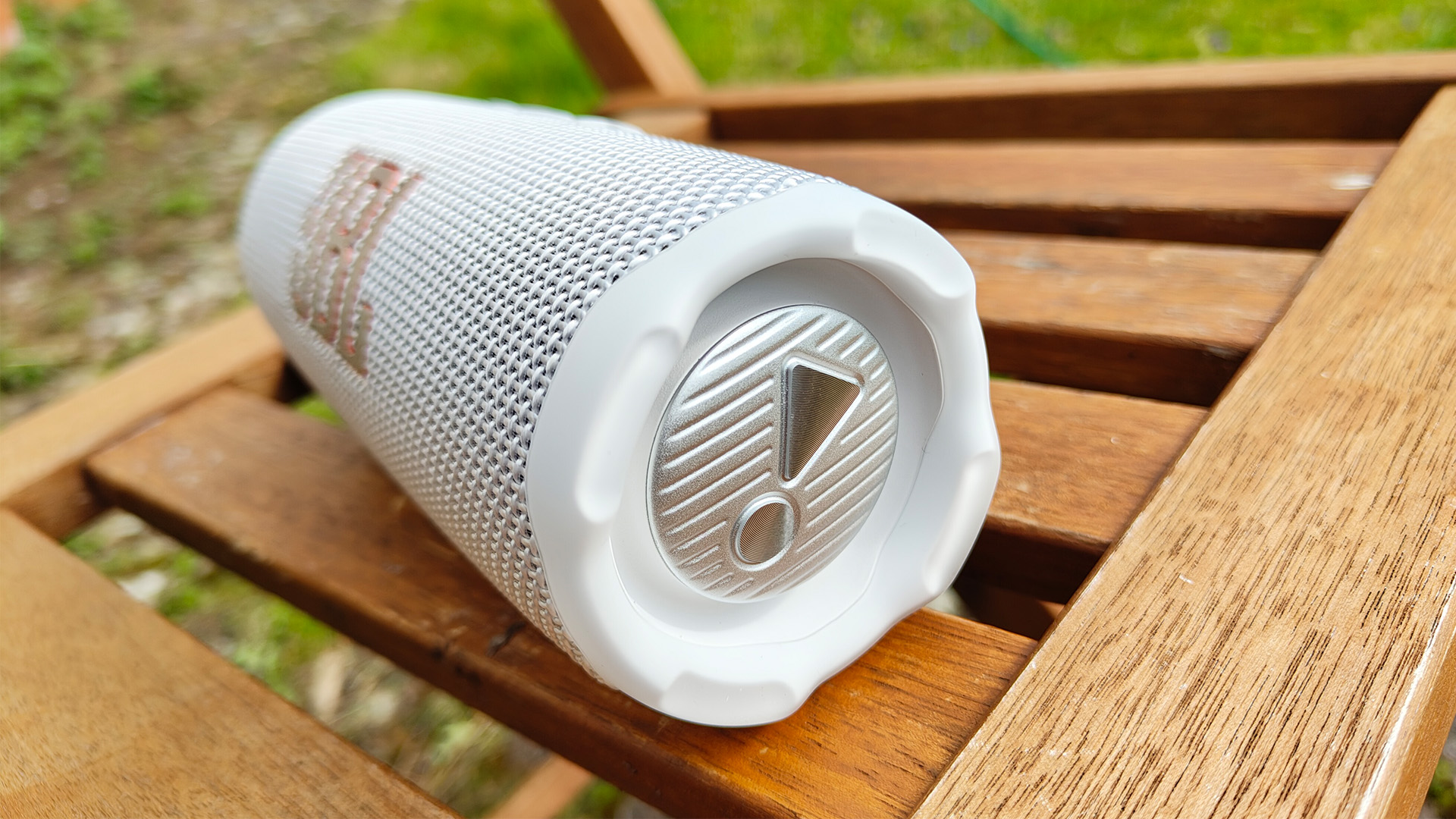


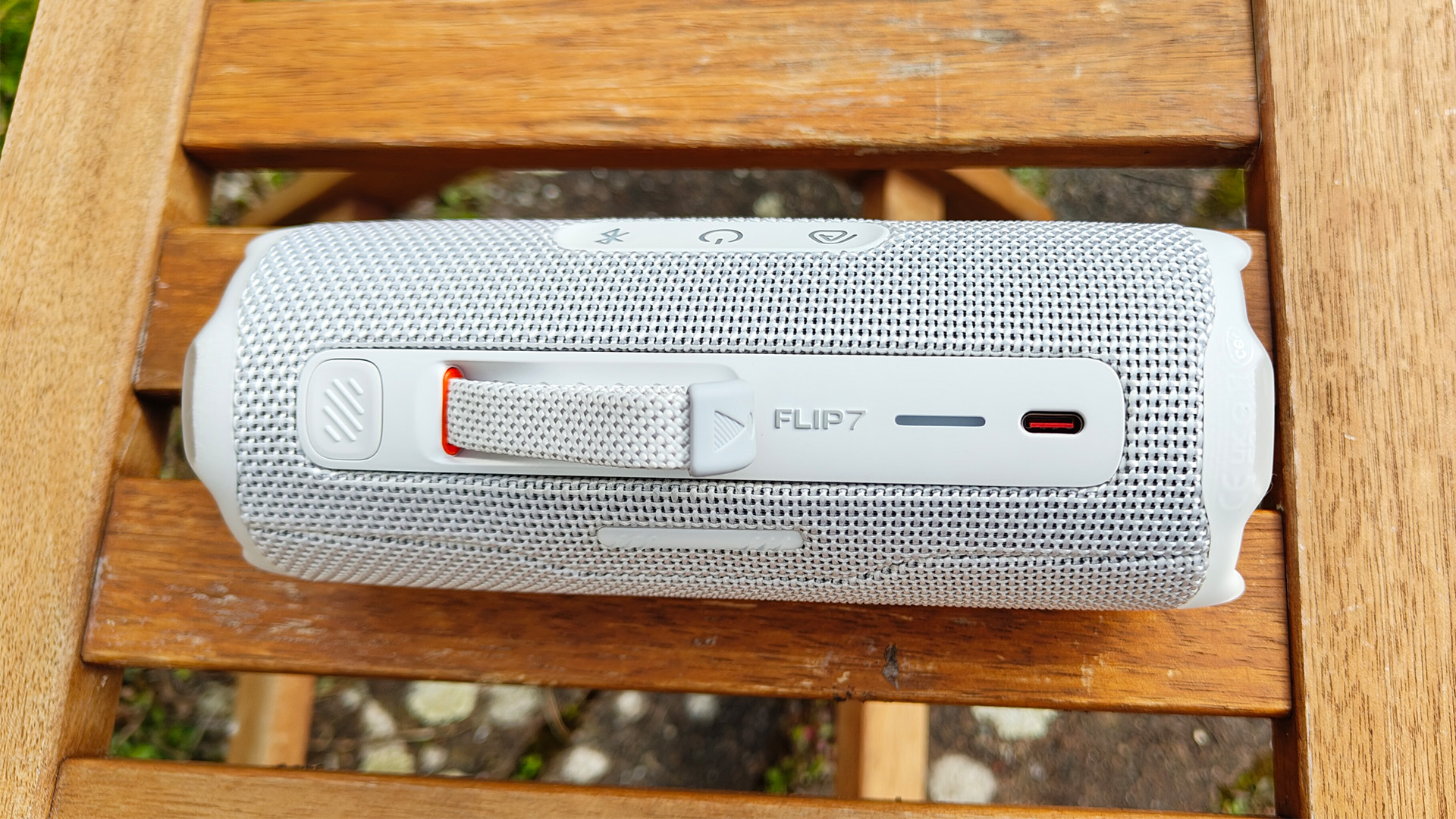

The JBL Flip 7 was introduced earlier this year, at the same time as the Charge 6, and as the smaller of the two units it’s particularly appealing to those who prioritise portability from their Bluetooth speaker.
Its cylindrical shape fits nicely in the hand – our reviewer compared it to a burrito – and at 560g it won’t weigh you down either. In fact, it should fit nicely into the side pocket of the average backpack. If not, it comes with a carabiner clip for hooking it on instead.
It's built for life on the road, too, with a hardy IP68-rated build that fends off almost anything you throw at it. You can spill stuff on it, drop it on the pavement, or take it camping and not have to worry about it tapping out.
The Flip 7’s more compact dimensions mean it has less power to play with: 35W powers a single woofer and tweeter, but it still gets the same AI Sound Boost, Auracast and hi-res support over USB-C that the larger Charge 6 offers.
Its battery doesn’t last as long either, but its 14 hours is a four-hour increase on its predecessor. You can squeeze an extra two out of it if you activate Playtime Boost, although doing so does have a detrimental effect on the performance.
Should you buy the JBL Flip 7?
The seventh-generation Flip is the best-sounding version JBL has ever made. It sounds more insightful than ever, with added bass, clarity and excellent dynamics – a common weakness when it comes to more compact speakers.
If you’re looking for a portable Bluetooth speaker that majors on portability but can still put on a performance that belies its compact dimensions, the answer is a resounding ‘yes’.
Is it the best portable Bluetooth speaker at its price?
The Flip 7’s closest contender is the Beats Pill, but that has a slightly higher RRP and a less favourable four-star review, so the JBL is the clear favourite.
What complicates things slightly is the current availability of JBL’s older Charge 5. The arrival of its successor means the Charge 5 is now available for the same price as (and sometimes even less than) the Flip 7, which presents something of a dilemma.
The Charge 5 is the more capable of the two speakers, but it is bigger and heavier – so whether it actually represents a better option is entirely down to your particular requirements.
- Read our full JBL Flip 7 review
- Full comparison: JBL Flip 7 vs Flip 6
- Full comparison: JBL Flip 7 vs Charge 6
JBL Xtreme 4
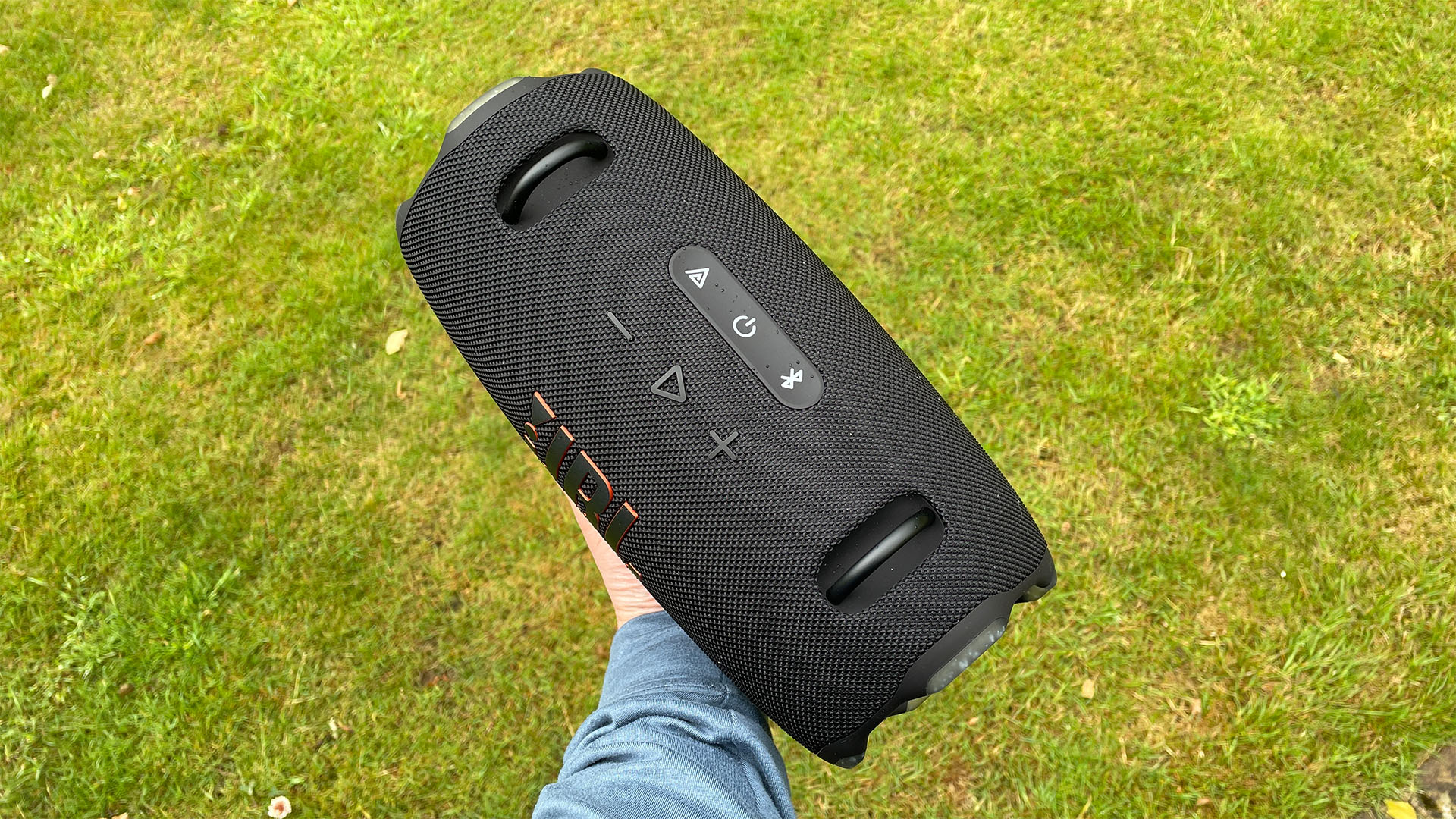
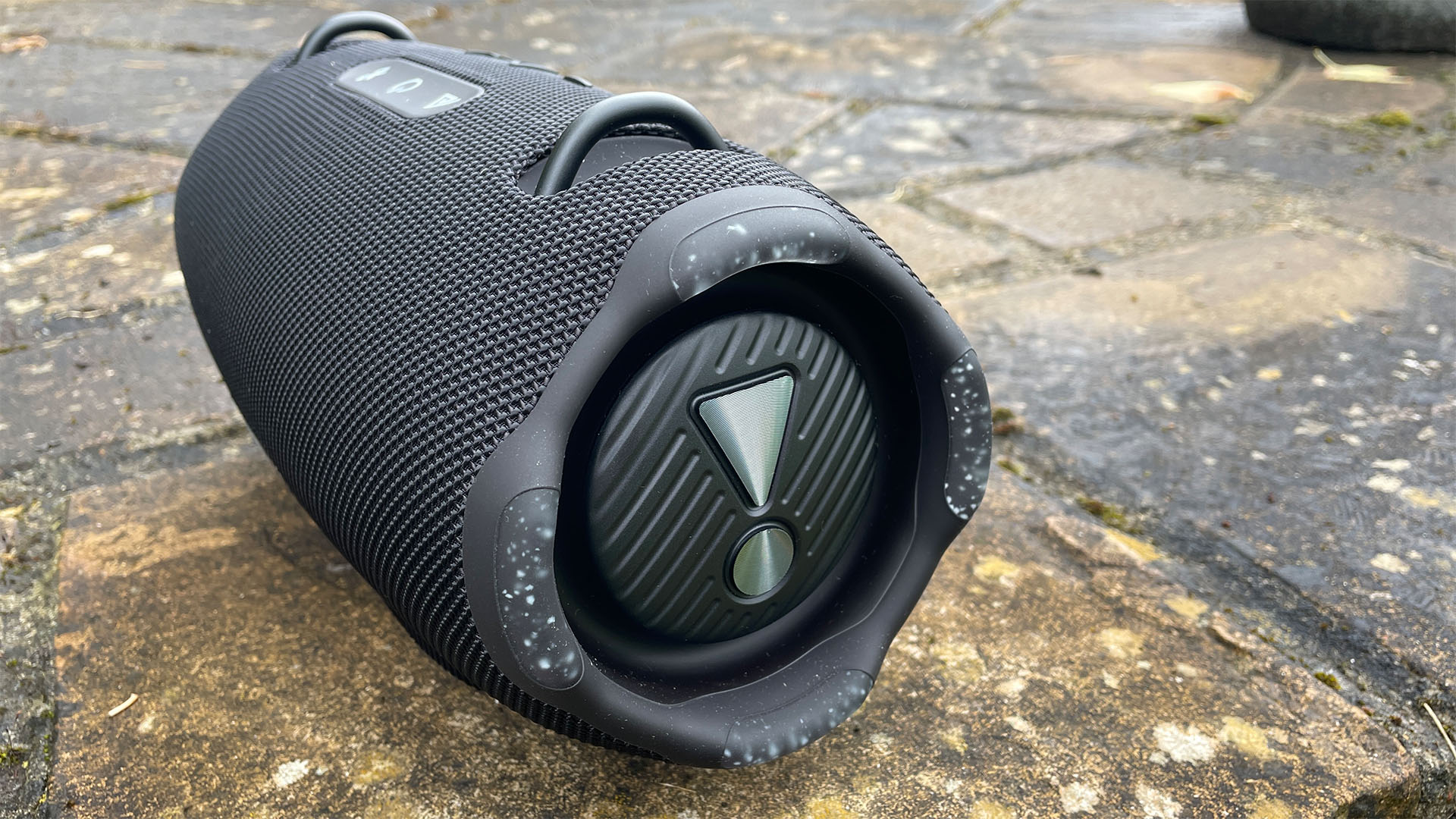


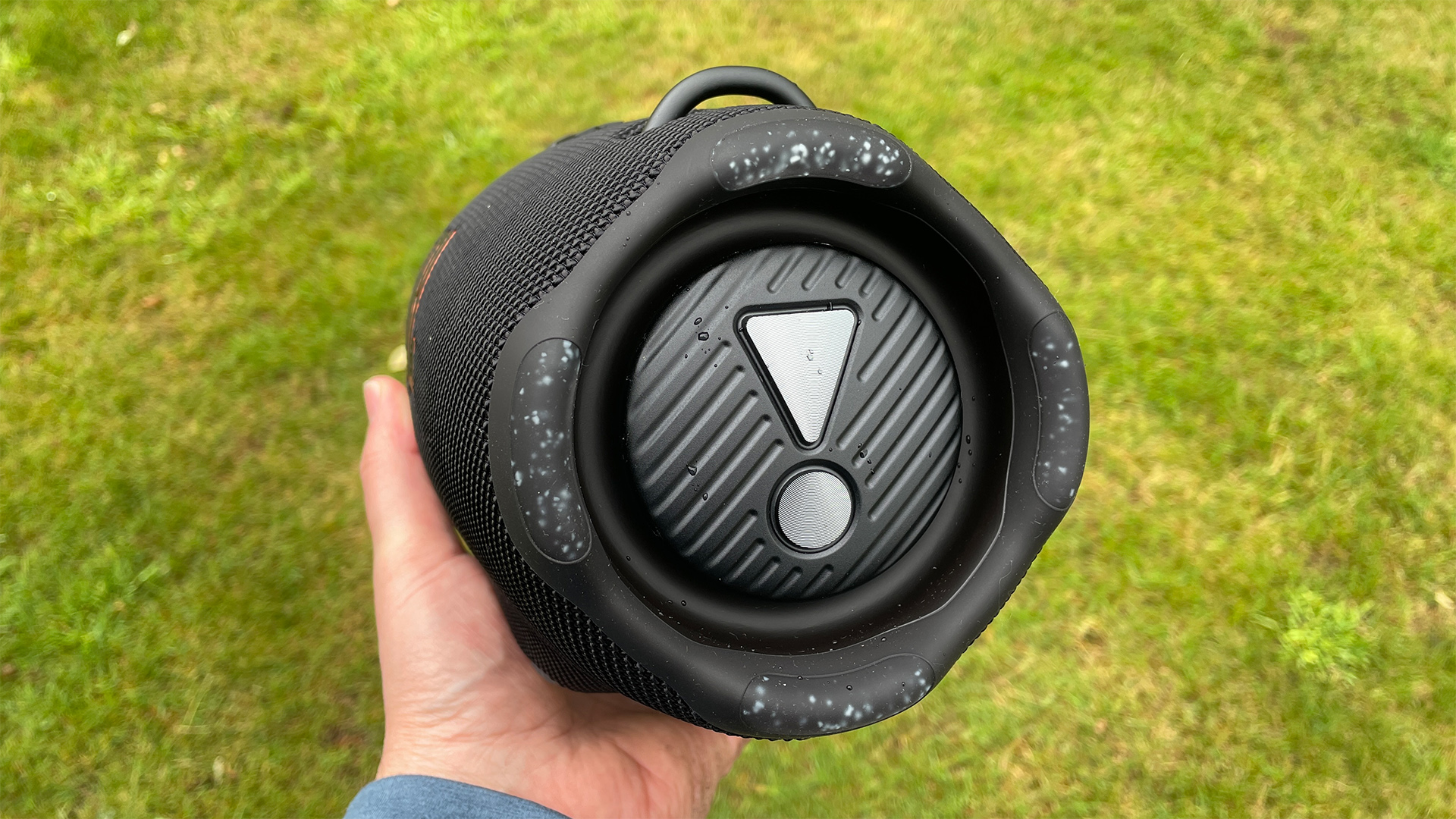
Should you buy the JBL Xtreme 4?
The Xtreme 4 isn’t the heftiest of JBL’s portable Bluetooth speakers – that honour goes to the Boombox 3 Wi-Fi – but weighing in at 2.1kg and shipping with an optional shoulder strap, it’s certainly on the large side.
That bulbous IP67-rated chassis houses two 70mm woofers, two 20mm tweeters, and up to 100W of power to drive them. That drops to 80W when using battery power, which lasts up to 24 hours on a single charge. Plugging it in for just 10 minutes adds an extra two hours to the tally, plus you can use it to charge other gadgets if they are running low.
Like JBL’s other recent releases the Xtreme 4 uses AI to fend off distortion, and it also ditches JBL’s own PartyBoost connectivity in favour of Auracast, but it doesn’t get the support for lossless audio over USB-C.
You might expect a speaker that looks so beefy to be something of a sonic sledgehammer, but there is real refinement to the sound the Xtreme 4 produces. It’s clear and consistent with plenty of detail, and while the bass is plentiful it’s both tight and weighty.
Should you buy the JBL Xtreme 4?
Its appearance might not be exactly what you’d expect from a premium Bluetooth speaker, but as a combination of rugged portability, useful features and head-turning sound quality that fills a large space, it doesn’t get better than this.
Is it the best portable Bluetooth speaker at its price?
Yes. Its nearest competitor would be Bose’s SoundLink Max, which is a touch more compact and looks a bit more upmarket, but the JBL Xtreme 4 has the edge sonically and is often available for less than its full RRP of £330 / $380 / AU$430.
Throw in longer battery life, Auracast support, and a better app, and there’s nothing else at this more premium price for a Bluetooth speaker that we would recommend over the JBL Xtreme 4.
- Read our full JBL Xtreme 4 review
- Full comparison: JBL Xtreme 4 vs JBL Xtreme 4
- Full comparison: Bose SoundLink Max vs JBL Xtreme 4
JBL Go 4
Should you buy the JBL Go 4?
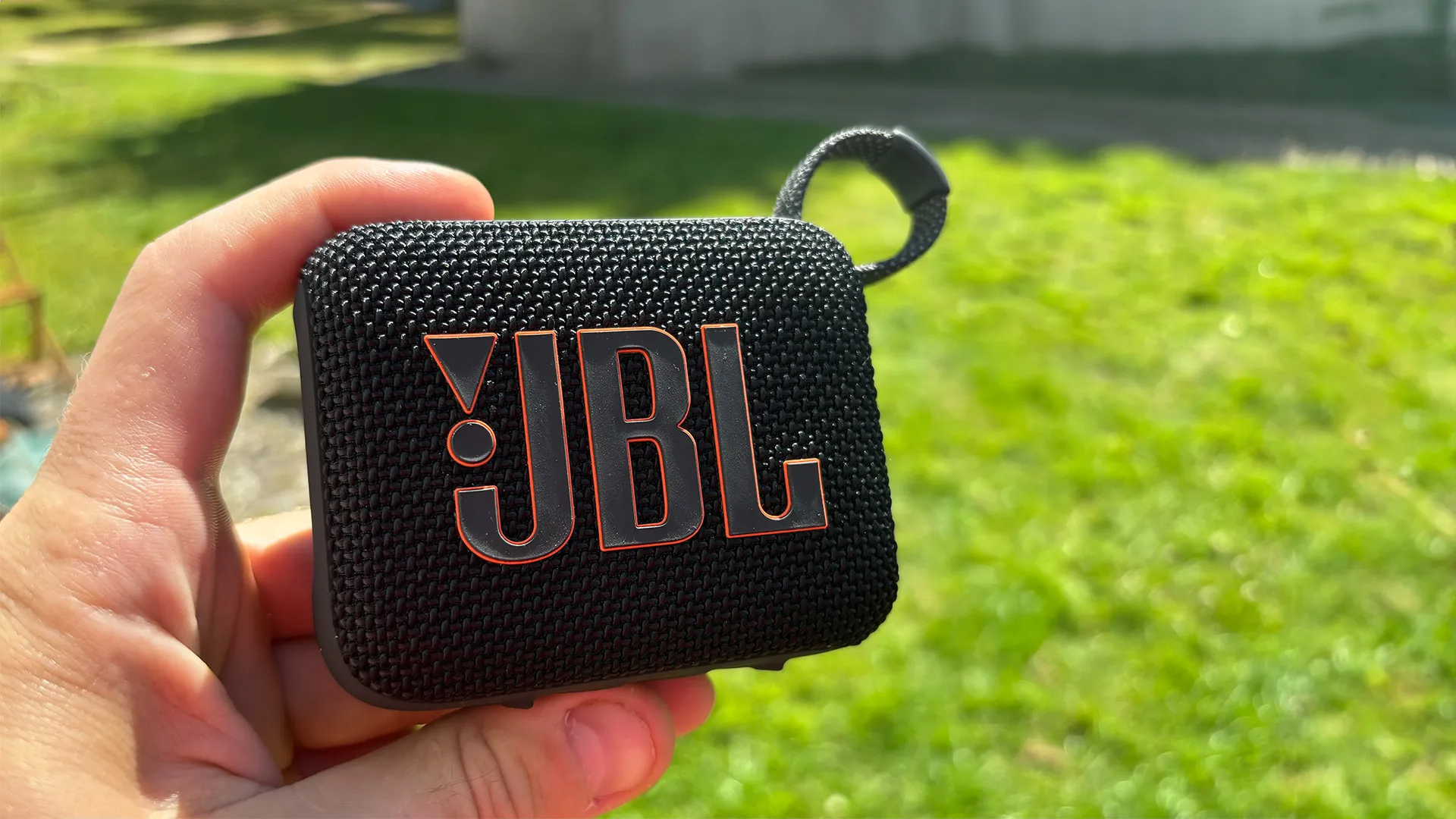
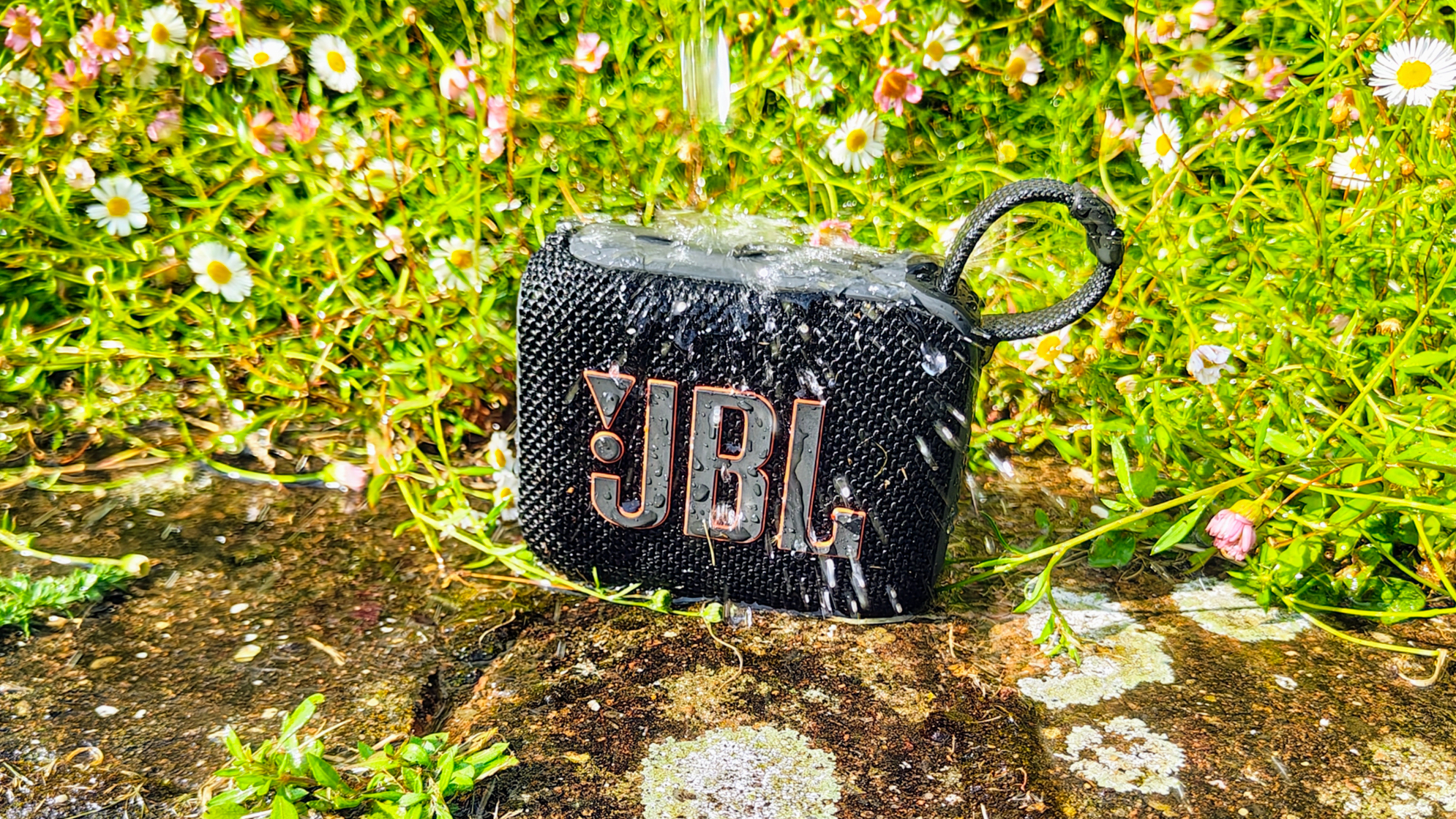
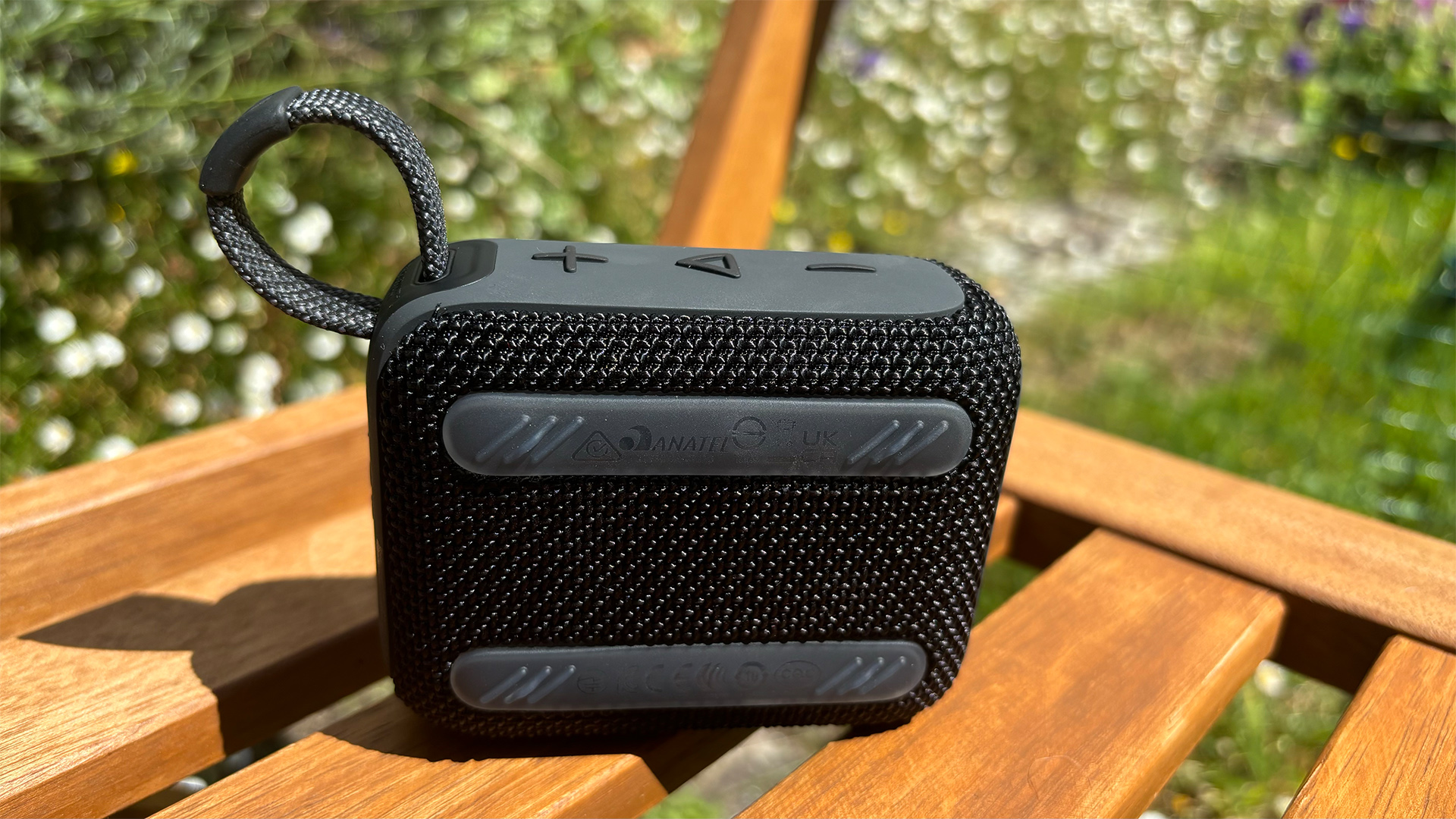
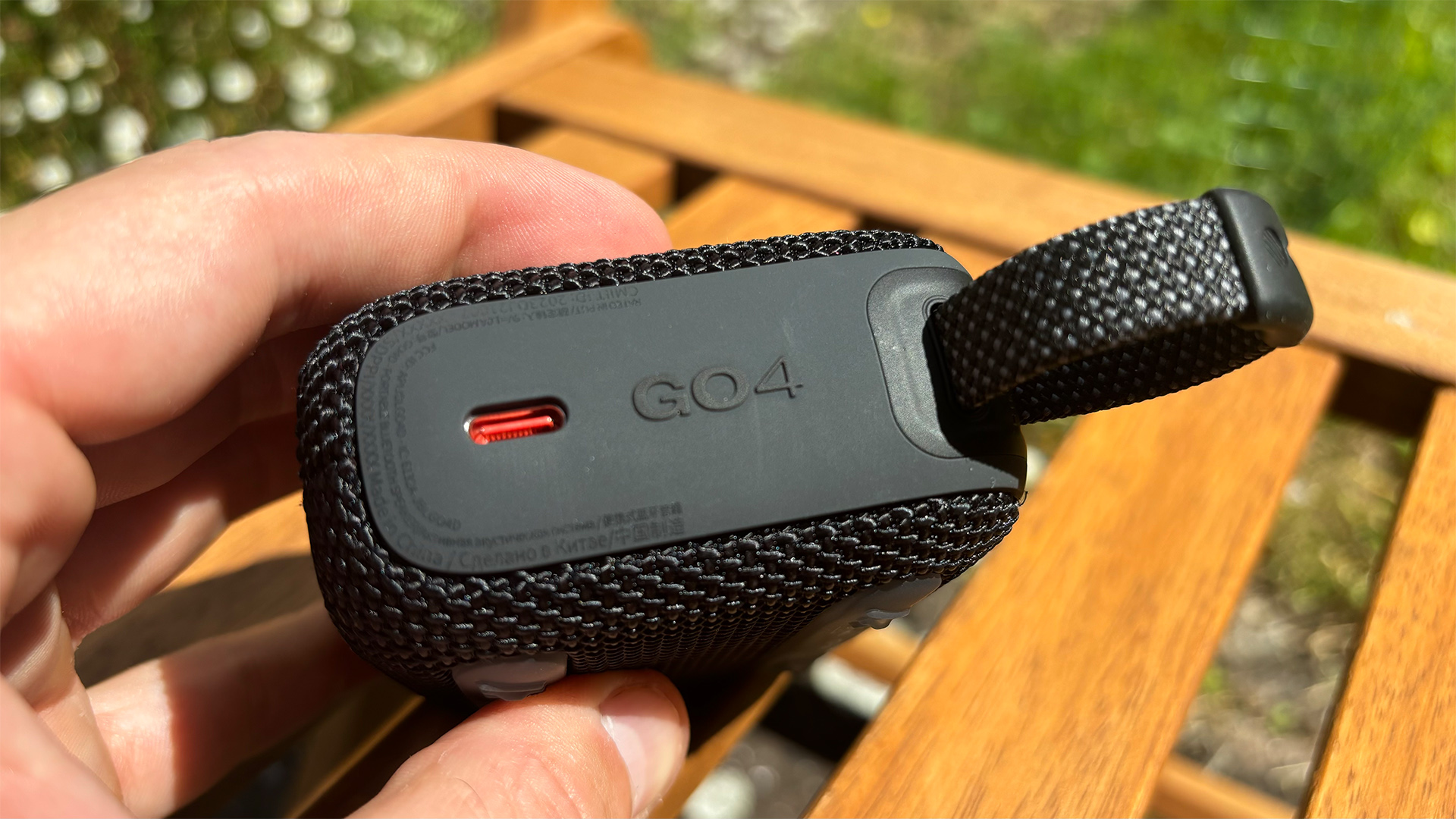
- Read our full JBL Go 4 review
For some people the ‘portable’ part of a portable Bluetooth speaker is the bit that matters most – and that means it needs to be as small and light as possible. Well they don’t come much more portable than the JBL Go 4.
Barely bigger than a bar of soap and weighing just 190g, the JBL Go 4 is small enough to fit in a coat pocket, and the perfect size for taking to the park or beach without being a nuisance to carry.
Obviously that limits how loud the Go 4 can get, with just 4.2W to play with, but nobody buys a speaker this size and expects to bother the neighbourhood with it. It does have Auracast, though, so you can create networks of compatible speakers if you want more volume, or create a stereo pair using two of them (although in our testing the synchronisation wasn’t perfect).
The battery lasts up to seven hours, although JBL has also included its PlayTime Boost feature, which squeezes out an extra two – but that comes at the expense of bass weight. Considering this isn’t a speaker that is blessed with much low-end oomph in the first place, it’s not worth using unless you really have to.
Despite its compact dimensions the JBL Go 4 makes up for its lack of power with a cohesive and engaging sound. Both indoors and outdoors this little speaker shines.
Should you buy the JBL Go 4?
If you’re looking for something extremely portable that won’t break the bank there’s a lot to like about the JBL Go 4. It has a solid set of features for a speaker that is so cheap; it sounds great considering its size; and it’s built to withstand the elements. It’s hard to think how you could possibly be disappointed by this little champ.
Is it the best portable Bluetooth speaker at its price?
You’ll struggle to find better for less than £50 / $50 / AU$100, but in the ‘budget’ category the JBL Go 4 is edged out by the Tribit Stormbox Micro 2 (£60 / $60 / AU$109).
It might also be slightly bigger, but the Tribit just sounds that little bit more open and mature than the Go 4 – plus its battery life of 12 hours is significantly longer.
When talking about much more expensive products, a price difference of £20 / $20 / AU$40 is negligible, but at this level it’s a fairly big chunk of the overall cost. If you can afford it, though, the Stormbox Micro 2 is worth the extra cash.
JBL Charge 5
Should you buy the JBL Charge 5?
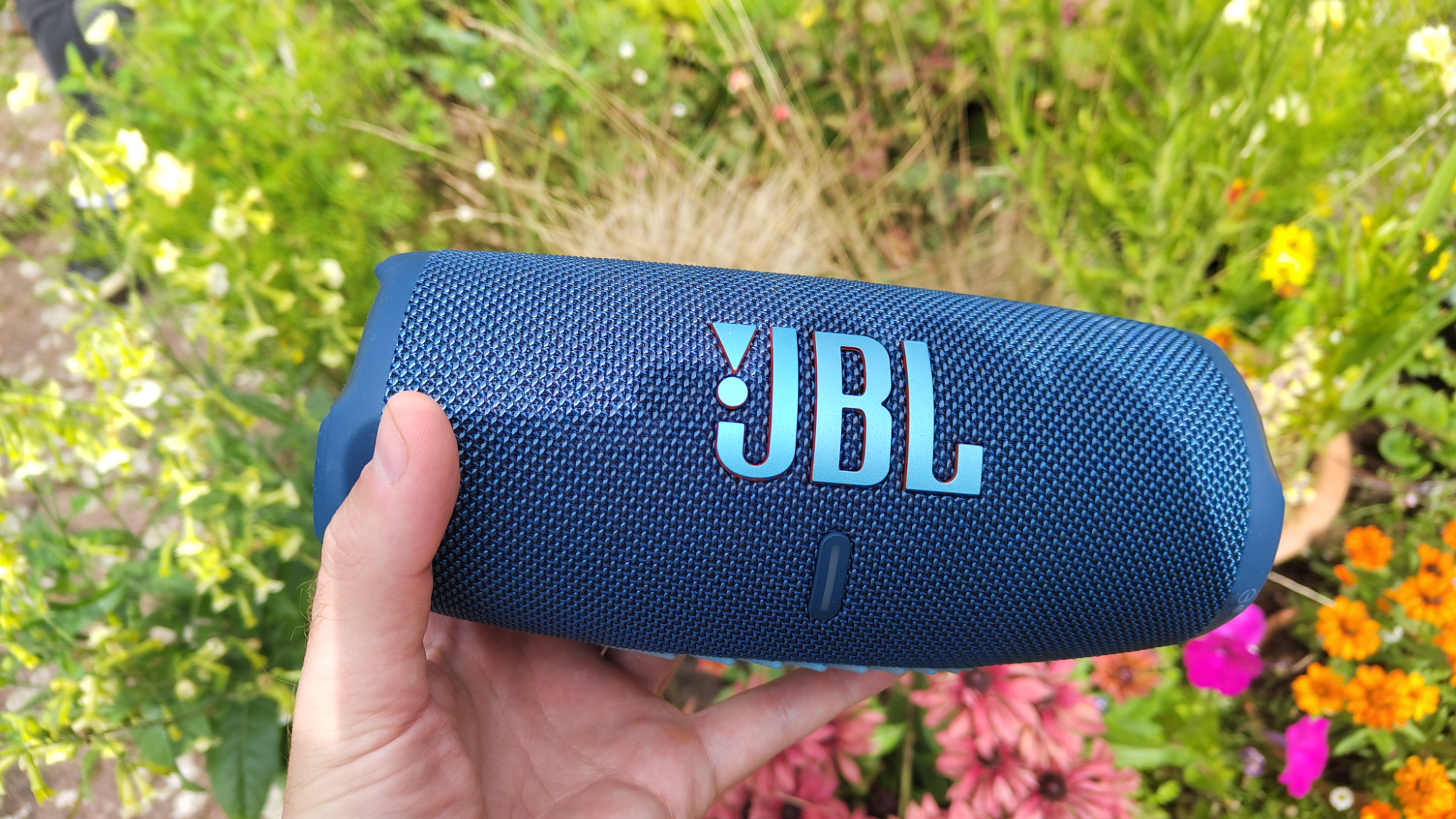
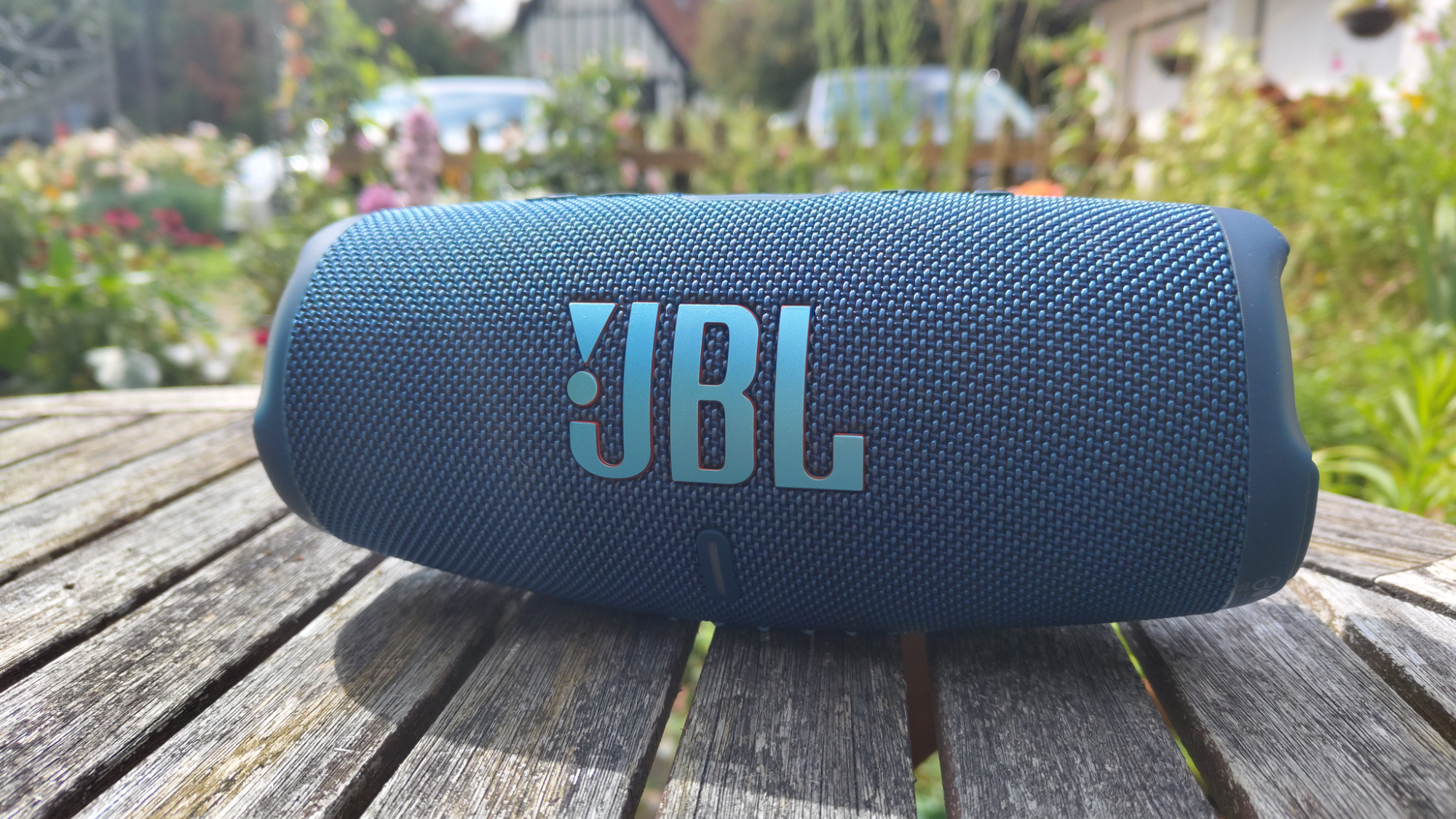

JBL’s Charge 5 was our favourite portable Bluetooth speaker for years, but the arrival of its successor means it has been replaced at the top of our best Bluetooth speakers list. So does that suddenly make the Charge 5 a bad choice? Of course it doesn’t.
It is now available for less than the Flip 7, and there are still plenty of reasons to pick up a JBL Charge 5 – you just might need to be quick to make sure you bag one before the stock runs out.
It’s not as hardy as the Charge 6 and the button positioning isn’t quite as intuitive, but with an IP67 rating it’s certainly no shrinking violet and the general usability was never a problem; it’s just better on the newer model.
It doesn’t sound quite as energetic or detailed as the Charge 6, but this is still a five-star speaker. Its punchy and engaging sound was impressive when we reviewed it at £160/$180, so the fact that the same performance is available for significantly less cash makes it an even better deal.
There’s no hi-res support here – the USB-C port is purely for charging – but we’d argue that lossless playback on a portable speaker isn’t exactly essential. You can still use it as a powerbank for your smartphone, too – a useful feature.
Should you buy the JBL Charge 5?
The Charge 5 had an impressive run as our favourite portable Bluetooth speaker and it was brought to an end only by its own replacement, so there’s still life in the old dog yet.
The improvements JBL has made to the Charge 6 mean we would guide you towards that if you can afford one, but the Charge 5 is still an excellent option if you’re operating on a tighter budget.
Is it the best portable Bluetooth speaker at its price?
Depending on how much you can find one for, there’s an argument that the Charge 5 represents the best performance-per-pound of any JBL speaker currently available – but that will only be the case while stocks last.
You have to pay a fair chunk more for the Charge 6, and the Charge 5 sounds better and has a longer-lasting battery than the Flip 7, so as long as you don’t mind the extra size and weight it’s a bit of a no-brainer.
- Read our full JBL Charge 5 review
- Full comparison: JBL Charge 6 vs JBL Charge 5
JBL Flip 6
Should you buy the JBL Flip 6?

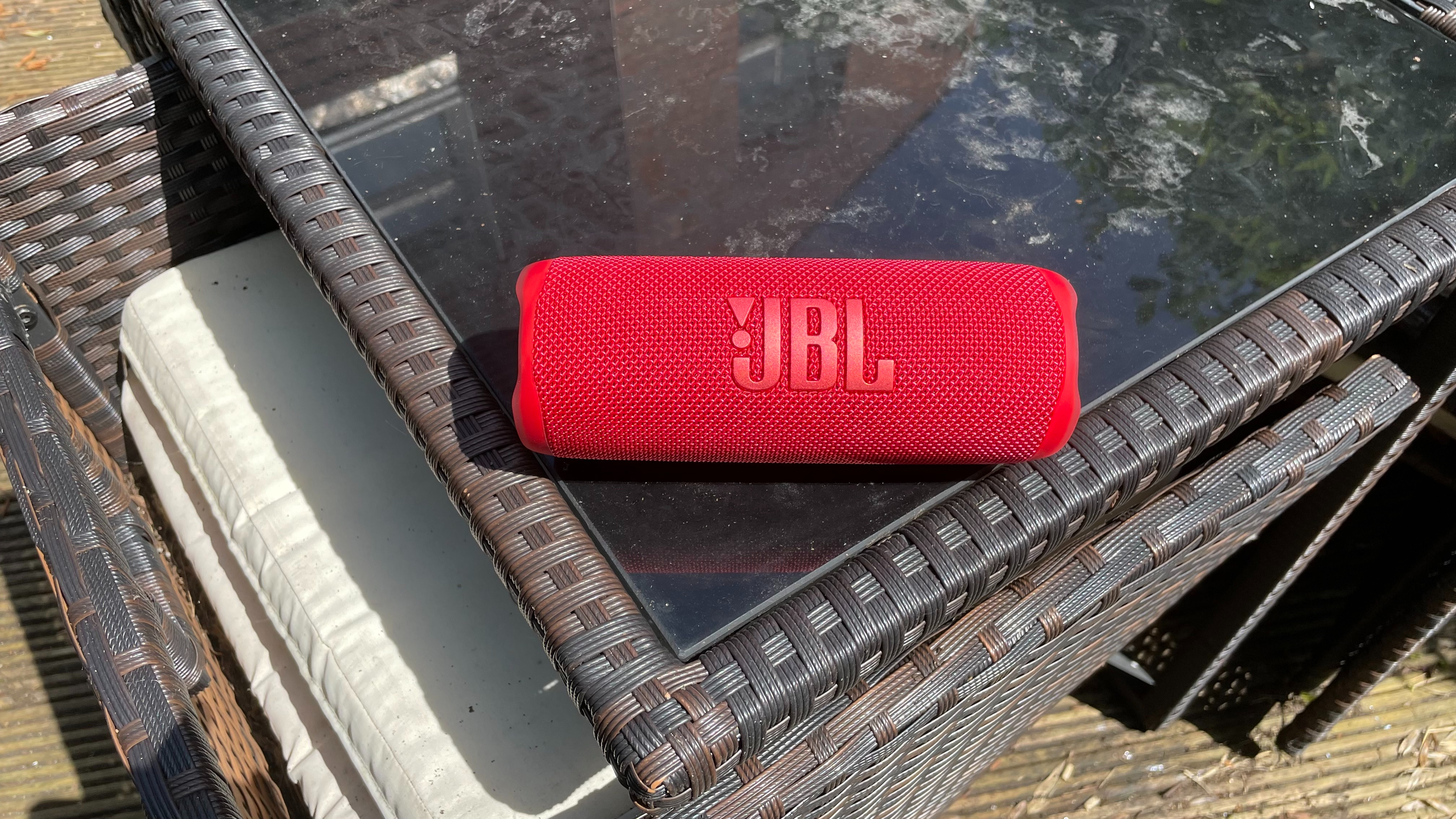

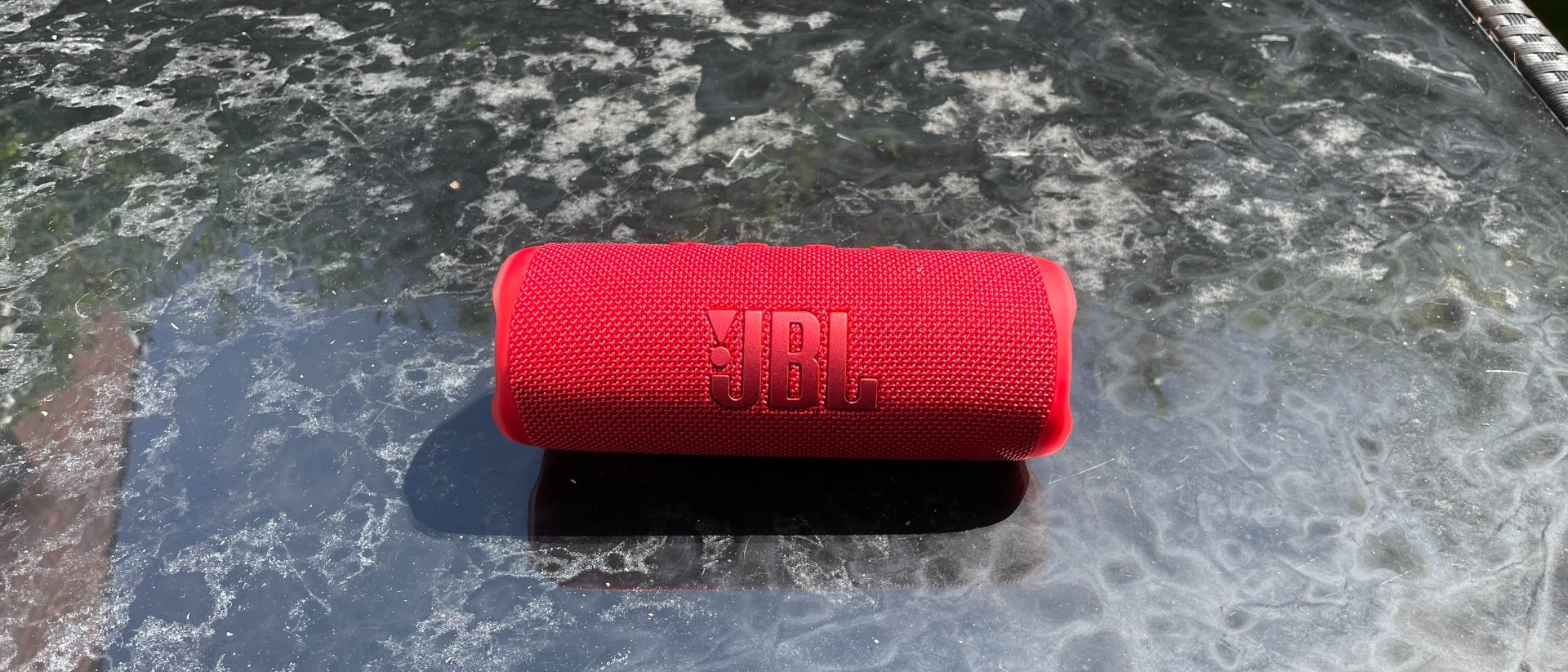
The JBL Flip 6 is another portable Bluetooth speaker that has recently been usurped by its own replacement, but as with the Charge 5 that has meant a price cut to the Flip 6 that makes it an appealing option if you’re not too bothered about owning the very latest model.
Now available for as little as £79 / $100 / AU$170 (as long as you’re not too fussy about the colour) the Flip 6 remains an excellent choice thanks to its tough build and fun sound. It provides plenty of oomph and enthusiasm, with punchy bass considering its size.
The Flip 6 also offers JBL’s trademark looks and rugged build quality, with an IP67 rating and a wrist strap to make it harder to drop. In fact, if you put the two models next to each they’re pretty hard to tell apart.
Throw in 12 hours of battery life and this is a speaker that might not be the newest anymore, but still has plenty going for it at a price that’s lower than ever.
Should you buy the JBL Flip 6?
As with the Charge 5, there is one good reason to buy the Flip 6: it’s a five-star speaker that is now available for much less than it was when we originally reviewed it.
The Flip 7 is certainly a better speaker overall, but the Flip 6 still sounds great. If you have older JBL speakers that you want to pair with the Flip 6, it also still supports PartyBoost, whereas the Flip 7 has switched to Auracast, which means it won’t be compatible with older models.
Is it the best portable Bluetooth speaker at its price?
Now that they have both been heavily discounted and there is very little difference in price between the Flip 6 and the Charge 5, it’s hard to pick the former ahead of the latter. The Flip 6 has portability on its side, but the Charge 5 is just that little bit better all round.
Neither will be around for ever, though, so if you decide you want to save some cash on one of these older models you probably need to act sooner rather than later.
- Read our full JBL Flip 6 review
- Full comparison: JBL Flip 7 vs JBL Flip 6
- Full comparison: JBL Flip 6 vs Sony ULT Field 1
JBL Xtreme 3
Should you buy the JBL Xtreme 3?


You might have detected a pattern emerging here, but since the arrival of the Xtreme 4, JBL’s Xtreme 3 has remained on sale for a reduced price. You can save yourself around £70 / $50 / AU$145 by opting for the older model; but is it a false economy?
JBL’s Xtreme 3, which was originally released back in 2021, looks almost identical to the newer Xtreme 4 that succeeded it last year. It has that familiar barrel-shaped chassis, which weighs a fraction under 2kg and houses two 7cm woofers, a pair of 20mm tweeters, and a passive bass radiator at either end.
Power maxes out at a suitably chunky 100W, although it’s limited to 60W unless you plug it into the mains. Use the built-in battery and you are looking at around 15 hours before it needs charging.
JBL has gradually made its other portable Bluetooth speakers more hardy over time, but the Xtreme 3 has the same IP67 rating as the newer version. That means it can get caught in the middle of a downpour, thrown into a pool, or covered in dust and dirt, and emerge unscathed.
Give it some tunes to play and the Xtreme 3 does so with a real sense of gusto, delivering weighty but controlled bass while keeping the high frequencies clear and insightful. Detail and dynamics are impressive, and there’s a particularly strong sense of timing.
Should you buy the JBL Xtreme 3?
Much like the other older JBL speakers on this list, the Xtreme 3 didn’t become a bad product just because a newer version appeared on the scene. Even four years after we first tested it we stand by the five-star review, especially considering we found the sonic differences between the two models to be fairly minor.
The Xtreme 4 does offer much longer battery life – 24 hours compared with just 15 – and it supports Auracast rather than the older PartyBoost, but in terms of ruggedness and driver configuration, the two are identical.
If you can afford the Xtreme 4 then it’s certainly worth it, but if you opt to save yourself some cash, the most noticeable difference will be in how often you have to charge it.
Is it the best portable Bluetooth speaker at its price?
£230 / $270 / AU$399 for a speaker that’s more than four years old does feel like quite a lot, especially when you consider that the JBL Charge 6 – the top overall pick on our list of the best Bluetooth speakers – is available for quite a lot less.
The Charge 6 is quite a bit smaller and doesn’t have as much power, so if sheer volume is required it’s probably not a sufficient substitute, but if it was our money we’d go for the newer speaker and pocket the spare cash.
- Read our full JBL Xtreme 3 review
- Full comparison: JBL Xtreme 4 vs JBL Xtreme 3
So, should you buy a JBL portable Bluetooth speaker?
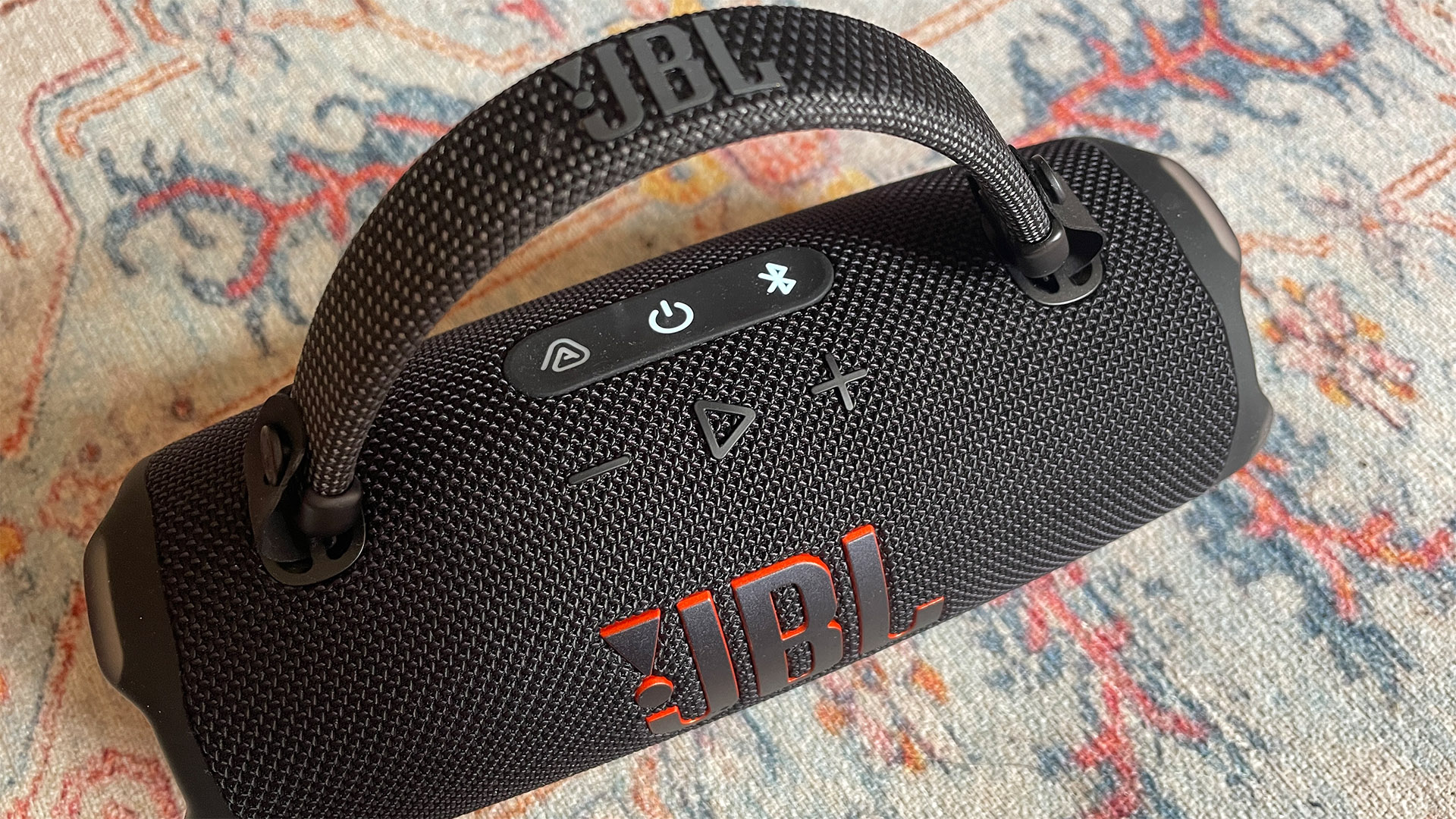
There’s a good reason JBL products take up multiple spots in our guide to the best Bluetooth speakers: they sound great, are packed with features, and are designed to put up with exactly the kind of punishment that a portable speaker is likely to face throughout its life.
JBL has also done an excellent job of developing a wide range of speakers that cater for different wants and needs. If portability is your priority there’s the Go line, while the Xtreme requires a lot more muscle to lug around but has the kind of power needed to soundtrack a decent-sized gathering. And in the middle you will find the Charge and Flip, consummate all-rounders that are easy to recommend to everyone.
We also like how JBL keeps older generations of products around and continues to sell them at a reduced price, giving potential buyers more choice. It’s the ideal way to cater to different kinds of customers, rather than forcing everyone to buy the latest product regardless of whether they need all the features or not.
How about JBL alternatives?
JBL is hardly short of competitors when it comes to portable Bluetooth speakers, but it’s difficult to think of another brand that has this breadth of products of such consistently high quality.
There are certainly alternatives out there for those who aren’t so keen on JBL’s active aesthetic though.
Dali’s Katch G2 has been a favourite of ours for some time now, although you will pay a premium for its classy build and finish. For something more affordable (albeit still more expensive than the Charge 6) we also like the B&O Beosound A1 (2nd Gen), which not only looks great but also offers Alexa support.
As well as the aforementioned Tribit Stormbox Micro 2 and Bose SoundLink Max, Sony’s LinkBuds Speaker might also be worth considering. It lacks the sonic chops of JBL’s best, which is why we awarded it only four stars when we reviewed it at the end of 2024, but if you like Sony’s audio products and can find one at a discount, it definitely has its charms.
MORE:
Best Bluetooth speakers 2025: tried and tested for every budget
Best outdoor speakers 2025: portable, wireless, waterproof models tried and tested
Best waterproof speakers 2025: all types tested for every budget
Tom Wiggins is a freelance writer and editor. A lifelong fan of Brighton & Hove Albion F.C., his words have graced a variety of respected sporting outlets including FourFourTwo, Inside Sport, Yahoo Sport UK and In Bed With Maradona. He also specialises in the latest technology and has contributed articles to the likes of TechRadar, TrustedReviews, ShortList, Wareable, Stuff, Metro, and The Ambient.
You must confirm your public display name before commenting
Please logout and then login again, you will then be prompted to enter your display name.

